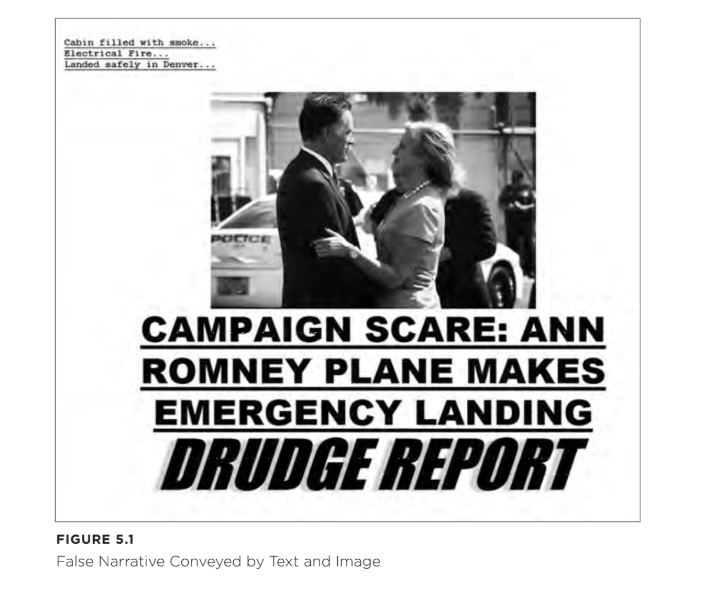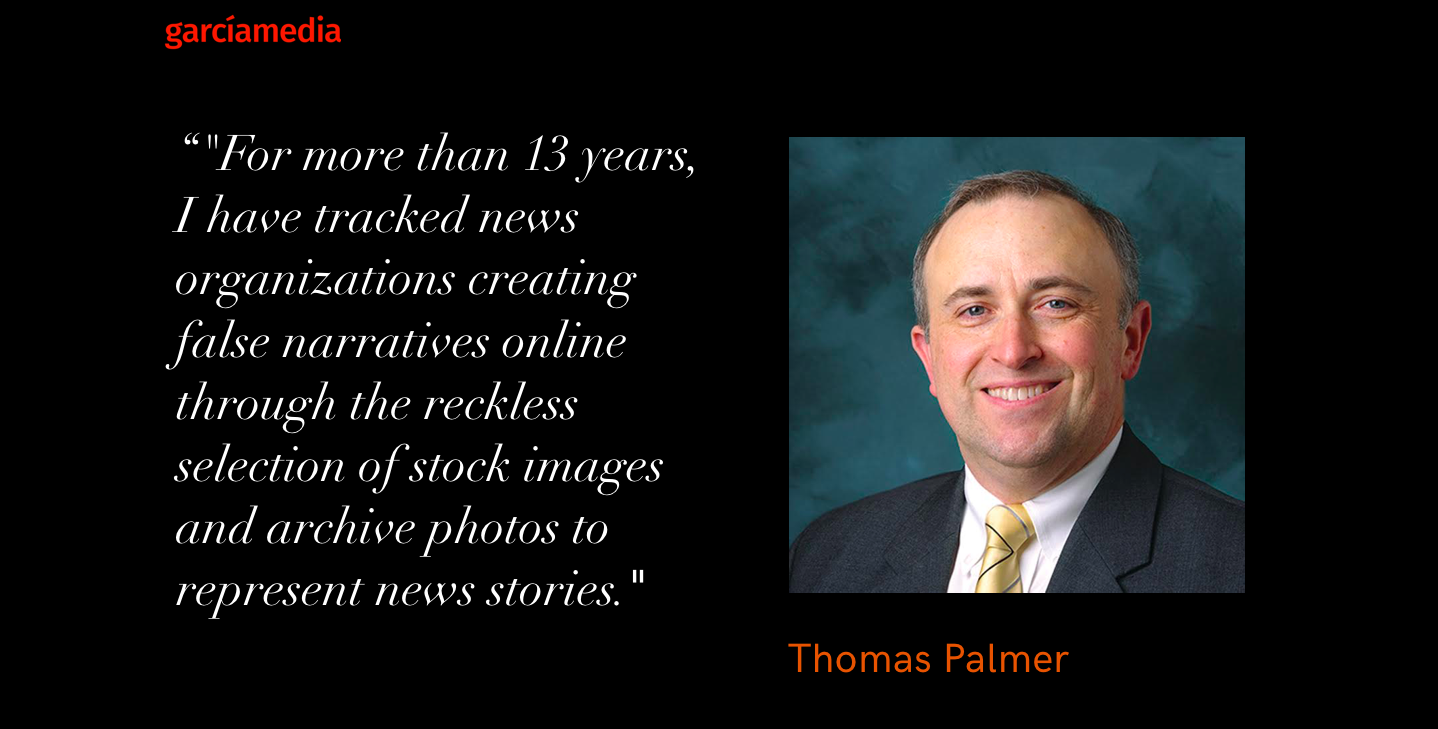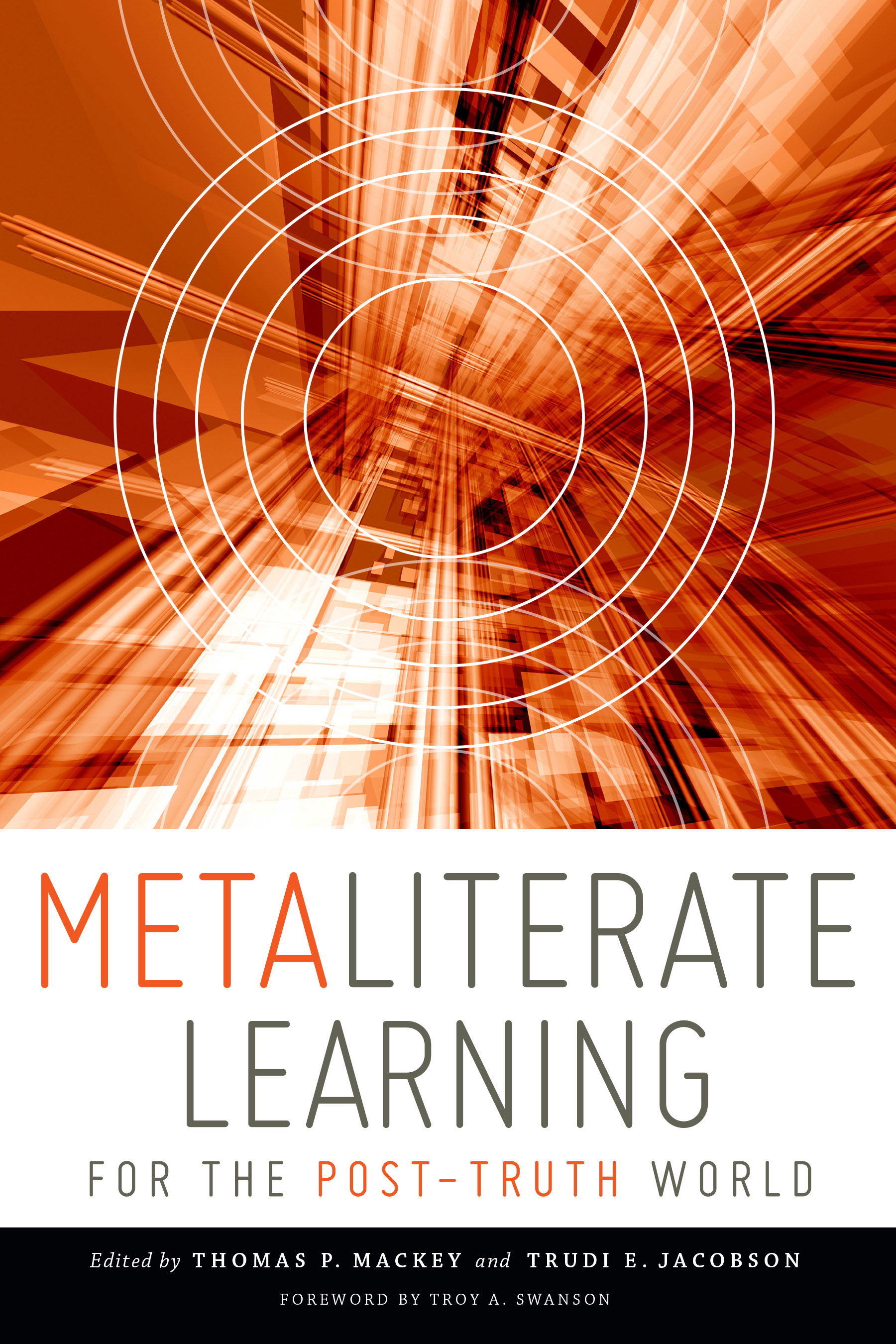A new book provides interesting examples and great lessons about the role that visuals play in storytelling – with emphasis on the threat of contextual misrepresentation.
The term “fake news” is now used so often that we are growing immune to it — not that we should!
With fake news also come “fake visuals,” and, more alarmingly, visuals and story text that are truthful in their original, separate forms — but don’t tell the truth when paired together. In other words, two pieces of truthful story content can be woven together to create a false narrative.
This new book, Metaliterate Learning for the Post-Truth World, edited by Thomas P. Mackey and Trudi E. Jacobson, “addresses the profound challenges of the post-truth world through the exploration of metaliteracy theory and practice from multiple disciplinary perspectives.” One of the chapter authors, Thomas Palmer, Interim Director of the Journalism Program, Department of Communication at the University of Albany — and a former student of mine at Syracuse University in 1985 — deals in exhaustive detail about “text-image malpractices.” Through social semiotic analyses, he has named this phenomenon, “intersemiotic contextual misrepresentation.” He explains how it occurs through the improper fusion of communication modalities — including writing, sound, film/video, photography, artwork and design.
Thomas’s chapter highlights about contextual misrepresentation include:
-
- How a New York Times photo featuring President Barack Obama was trafficked during the 2016 election by a fake news operation — but currently remains online at numerous websites to continue the disinformation.
-
- How racist trolls exploited legitimate news photos to conduct a malicious social media campaign during the “Black Panther” movie opening in 2018.
-
- How Katie Couric’s 2016 “Under the Gun” documentary misused b-roll to fabricate a non-responsive, eight-second-silent scene with gun-rights supporters — after she asked them a question.
-
- How a U.S. senator was duped by the contextual misuse of a 2008 Associated Press news photo to gain his support for lethal military aid for Ukraine,
- How the mere inclusion of a photograph with a contextually false statement will boost credibility through the “truthiness effect.”
Thomas has quoted me in his chapter, and I am honored to be cited there. I have reached out to him to tell us a little bit more about this book and its importance.
When Stories and Pictures Lie Together — and You Do Not Even Know It
One of Thomas’s most poignant examples in Chapter 5 includes this photo of Mitt Romney and his wife Ann. Here is the photo and an excerpt from the new book:

Let us examine the first image in this chapter (figure 5.1). The loving and relieved reunion between US presidential candidate Mitt Romney and wife, Ann, after her frightening flight experience, never happened. The picture is real. The screaming words in the sensational headline are correct. But the event that these words and picture convey together did not occur; the Drudge Report’s framing of the headline around a month-old Associated Press photo suggests this, though, through the ways readers negotiate semantic relationships with text and image. Presidential candidate Romney was actually campaigning in Nevada when his wife’s plane landed at Denver International Airport on September 21, 2012. News outlets did not photograph Ann Romney disembarking the aircraft (Stokols 2012). The deliberate juxtaposition of the headline and photo on the Drudge Report (2012) website delivered a false narrative to readers. This is how text and pictures lie together. The semantic cues of text and image ease the gullible reader into a cognitive snare—completely unaware.The author has termed this broadly as intersemiotic contextual misrepresentation.
A chat with Thomas Palmer

Mario: What prompted you to participate in a book like this?
Thomas:
Out of an abiding care for the public trust, I’ve been alarmed at the volume of contextually misrepresented visual and textual content spread on social media platforms in the post-truth era — often for social propaganda or disinformation. But for more than 13 years, I have tracked news organizations creating false narratives online through the reckless selection of stock images and archive photos to represent news stories. I have termed this malpractice as intersemiotic contextual misrepresentation. Although my research has revealed examples dating from the 1400s, the latest abuses stem from a digital-first mindset which ignored journalistic workflow editing principles. In response, I created Picture Prosecutor, a media-criticism blog, to expose news organizations that have erred. But as social media sharing skyrocketed in recent years, this deception has far outpaced instances or checks by news outlets. I am grateful to my colleagues, Thomas Mackey and Trudi Jacobson, who offered me this opportunity to contribute to their metaliteracy learning initiatives, publications and MOOCs.
Mario: Who will benefit from the content of your book?
Thomas:
The public, higher-education institutions and K-12 school officials seeking to develop metaliteracy learning programs — not just news executives, online producers and reporters. In the post-truth era, this is imperative. Surprisingly, collegiate journalism programs, as a whole, have not developed a multimodality, pedagogical system to prepare the 21st century journalist. Despite the addition of multimedia and design courses, the written word remains a lopsided emphasis in journalism curricula. Consequently, a division has persisted for decades between the “word people versus the visual people” in newsrooms — as I quote you in this chapter. In the same passage, I make this point: “Without lexical terms and semantic examples to identify wide-ranging relationships among words and images, the foundation for pedagogy, discourse, and literacy becomes elusive, if not unattainable. Serious implications face the Fourth Estate, given its fault lines …”
Mario: Do you feel that the fast speed of how news flows in the mobile/digital age is prompting more examples of false narratives and photos that, while authentic, may not relate the story as it happened?
Thomas:
Yes, and in this chapter, I document how the New York Daily News fell into this trap after it published a leaked surveillance photo of two Franklin County (N.Y.) men and contextually misrepresented them as fugitives Richard Matt and David Sweat in print and online. I note in this chapter: “The handling of this not-so-explosive photo is an example of the perils news organizations face today in the wilder frontier of digital-first publishing, where scoops are measured sometimes in minutes, even seconds.”
But the chapter is more than a trenchant criticism about missed opportunities in journalism education. It reveals how metaliterate learners can seize the initiative to discern deceptive content and to be proactive in exposing it. I explain how the Affective Domain in Metaliteracy Goals affords activism by learners to counter malicious social media campaigns as they develop — and to partner with news organizations while doing so to arrest mass deceptions. One example of this new activism occurred when social media users engaged in reverse-image research to thwart racist-tweet trolling during the “Black Panther” movie debut last year.
For more information about this book:
Contact for Thomas Palmer
Interim Director, Journalism Program
Department of Communication
University at Albany
tpalmer@albany.edu
@honestpix
http://blog.timesunion.com/
TheMarioBlog post # 2991
